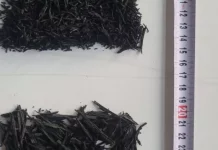XINING: Around the start of the 21st century, Madoi, dubbed “County of Thousands of Lakes” in northwest China’s Qinghai Province was passing through a bleak time — drying lakes, mountains with receding snow and decreasing wildlife. But now the land has been sheathed in green again.
Madoi is in a core area of the Yellow River’s headwaters region of the Sanjiangyuan (Three-River-Source) National Park, a pilot project. Sanjiangyuan, meaning the “source of three rivers,” is home to the headwaters of the Yangtze, Yellow and Lancang rivers.
Situated at an altitude of over 4,200 meters, the county had more ecological problems to contend with. The grasslands degenerated and were also damaged by marmots.
From 2003 to 2004, the rivers in the county dried up, exposing river beds covered in yellow sand. Since 2005, Qinghai has implemented ecological protection and construction projects in the Sanjiangyuan region. The second-phase of the project aims to protect the ecosystem in an area of 396,000 square km, with focus on vegetation conservation and restoration, said Tian Junliang, deputy head of the national park’s administration. The Yellow River’s headwaters region is a testament to the achievements of the project. “With rainfall and upstream runoffs, the Yellow River’s headwaters have kept flowing for nearly 16 years,” said Ma Gui, who is part of the management committee of the Yellow River’s headwaters region of the park.
Satellite images in 2000 showed there were only 261 lakes with an area of more than 0.06 square km in Madoi. However, according to the latest monitoring data released by Qinghai authorities in 2018, the number of lakes in the county has reached 5,849.
Two large lakes — Gyaring and Ngoring — in the Yellow River’s headwaters region, saw their area increase by 74.6 and 117.4 square km, respectively.–Agencies






